
Home |
||
|---|---|---|
Before the exhibitions |
Eight Impressionism exhibitions |
After the exhibitions |
|
||
James McNeill-Whistler
Pre-Raffaelites
James Abbott McNeill-Whistler
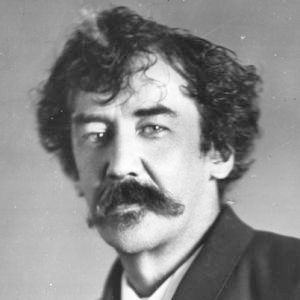
* 11. July 1834 in Lowell, Massachusetts; † 17. Juyi 1903 in Chelsea, London
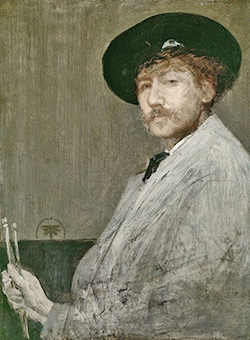
Self-portrait from 1872
Detroit Institute of Arts, Detroit, USA >
James McNeill Whistler was a North American artist who spent a large part of his life in England. He was a leading proponent of the credo "art for art's sake". The idiosyncratic signature for his paintings was in the form of a stylised butterfly, with a long stinger. The symbol was appropriate because it combined both aspects of his personality - his art was characterised by a delicacy, while his public persona was combative. Whistler called many of his paintings 'Arrangements', 'Harmony' and 'Nocturnes', emphasising the primacy of tonal harmony.
Whistler influenced the art world and the wider culture of his time with his artistic theories and his friendships with leading artists and writers. He was also acquainted with some Impressionist artists and their circle. He also took part in the 'Salon' in Paris, for example with the painting 'Symphony in White, No. 1'.
He was fascinated by nocturnal motifs, especially night scenes in harbours, painted with a blue or light green palette. He painted several such 'nocturnes'.
The 1860s marked a very creative time for the artist and he began to assign musically inspired names to his paintings. For example, 'Rose and Silver: La Princesse du Pays de la Porcelaine'. He was also a very well-known portrait painter. Whistler joined the Society of British Artists in 1884 and was eventually appointed president. During the later part of his life he concentrated more on graphic art.
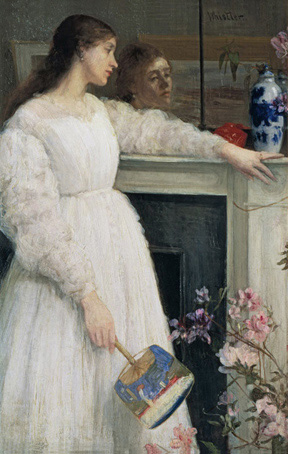
Symphony in White, No. 2: The Little White Girl
1864 - 77 x 51 cm - Oil on canvas
Tate Gallery, London, United Kingdom >
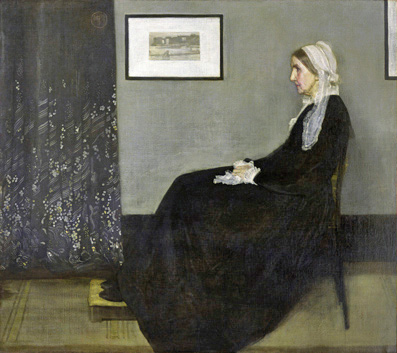
Arrangement in Grey and Black: Portrait of the Painter's Mother
1871 - 144 x 162 cm - Oil on canvas
Musée d'Orsay, Paris, France >
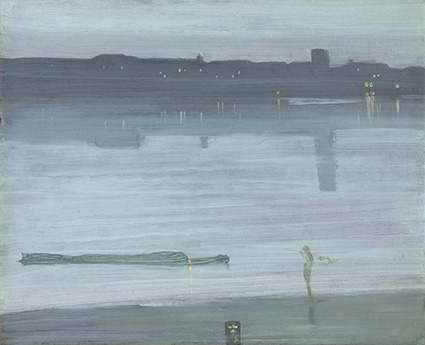
Nocturne: Blue and Silver - Chelsea
1871 - 51 x 61 cm - Oil on wood
Tate Gallery, London, United Kingdom >
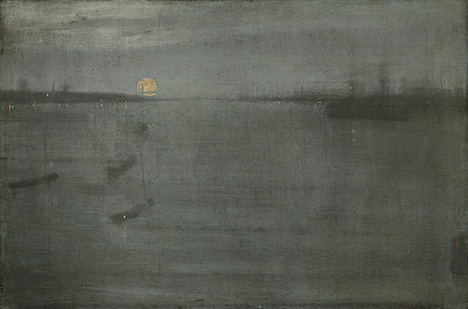
Nocturne: Blue and Gold - Southampton Water
1872 - 50 x 76 cm - Oil on canvas
Art Institute of Chicago, Chicago, USA >
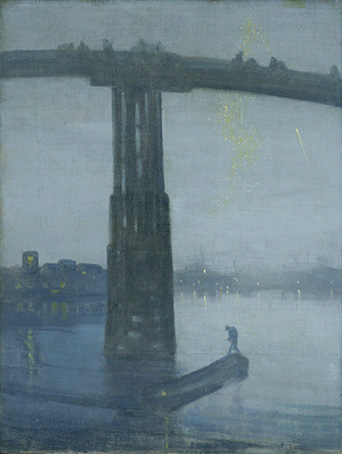
Nocturne: Blue and Gold - Old Battersea Bridge
1872/77 - 68 x 51 cm - Oil on canvas
Tate Gallery, London, United Kingdom >
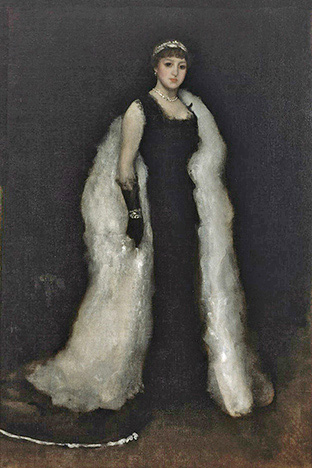
Arrangement in Black, No.5: Lady Meux
1881 - 194 x 130 cm - Oil on canvas
Honolulu Museum of Art, Hawaii, USA >
McNeill-Whistler has painted a large number of portraits:
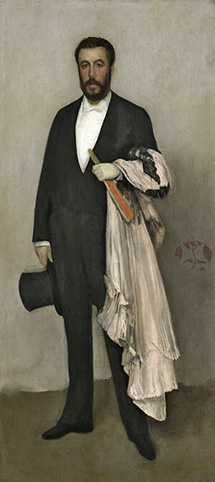
Arrangement in Flesh Colour and Black: Portrait of Theodore Duret
1883 - 193 x 90 cm - Oil on canvas
The Metropoltan Museum, New York, USA >
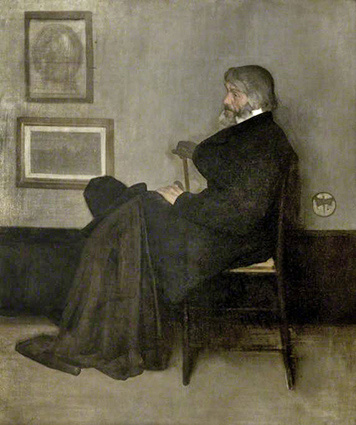
Arrangement in Gray and Black No.2: Portrait of Thomas Carlyle
1872/73 - 171 x 143 cm - Oil on canvas
Kelvingrove Art Gallery and Museum, Glasgow, Scotland >
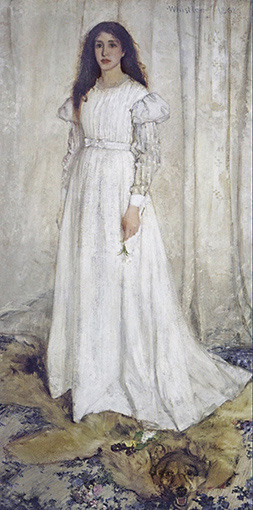
Symphony in White, No. 1
Portrait of Joanna Hiffernan
1861/62 - 215 x 108 cm - Oil on canvas
National Gallery of Art, Washington, USA >
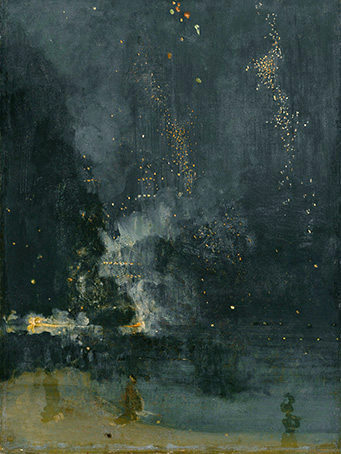
Nocturne in Black and Gold, the Falling Rocket
1875 - 60 x 46 cm - Oil on canvas
Detroit Institute of Arts, Detroit, USA >
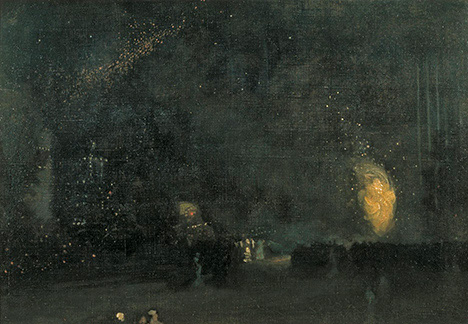
Nocturne: Black and Gold - The Fire Wheel
1875 - 54 x 76 cm - Oil on canvas
Tate Gallery, London, United Kingdom >
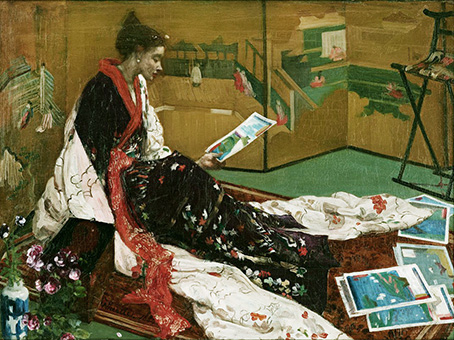
Caprice in Purple and Gold: The Golden Screen
1864 - 50 × 69 cm - Oil on Wood
Smithsonian Asian Museum, Washington, USA >
*********
Pre-Raffaelites
From 1844, a group of painters known as the Pre-Raphaelites emerged in England: John Everett Millais, Dante Gabriel Rossetti and William Morris, to name but a few. A younger, important representative of the movement, Edward Burne-Jones, also joined the group, as did others.
In the broadest sense, James Abbott McNeill Whistler, who was also acquainted with the Impressionists, also belongs to this group.The aims of the group were set out in a manifesto:
- To express real ideas;
- to study nature carefully in order to know how to express it;
- to interact with what is direct, serious and intimate in previous art, to the exclusion of what is conventional, to parody and memorise oneself;
- and, above all, indispensable for making good paintings and statues.
John Everett Millais
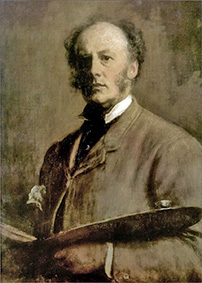
* 8. 6. 1829 in Southampton; † 13. 8. 1896 in London
British painter from the Pre-Raphaelite circle. Millais was the first artist to be awarded the hereditary title of Baronet.
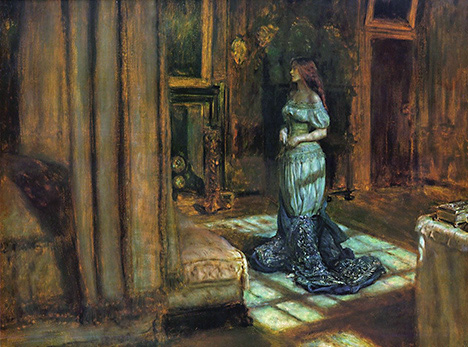
The Eve of St Agnes
1862/63 - 118 × 155 cm. - Oil on canvas
British Royal Collection
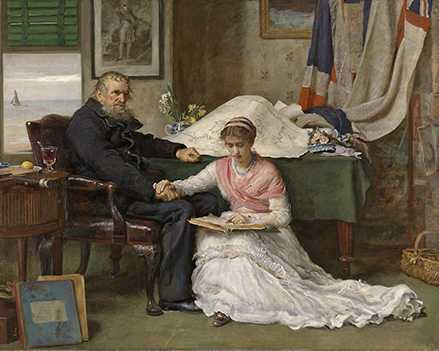
The North-West Passage
1874 - 176 × 222 cm - Oil on canvas
Tate Gallery, London, United Kingdom >
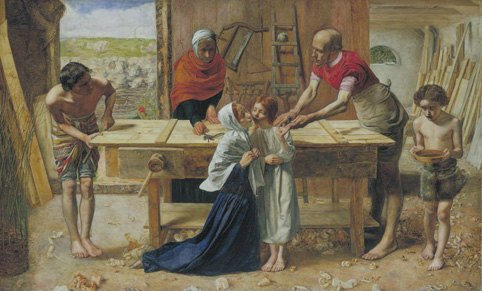
Christ in the House of His Parents
1849/50 - 86 x 140 cm - Oil on canvas
Tate Gallery, London, United Kingdom >
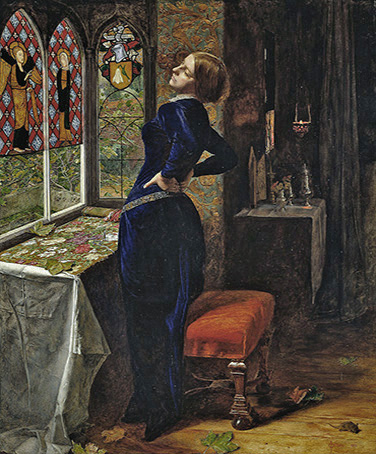
Mariana
1851 - 60 x 50 cm - Oil on mahogany wood
Tate Gallery, London, United Kingdom >
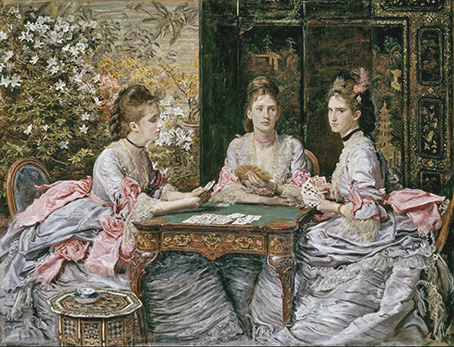
Hearts are Trumps
1872 - 166 x 220 cm - Oil on canvas
Tate Gallery, London, United Kingdom >
******
Dante Gabriel Rossetti
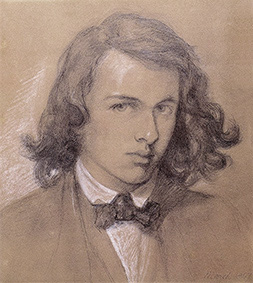
* 12. 5. 1828 in London; † 9. 4. 1882 in Birchington-on-Sea, Kent
British poet and painter who was equally gifted in both arts. He was the driving force behind the Pre-Raphaelites due to his dominant and charismatic personality. He thought little of conventions and became an eccentric eccentric in the last years of his life.
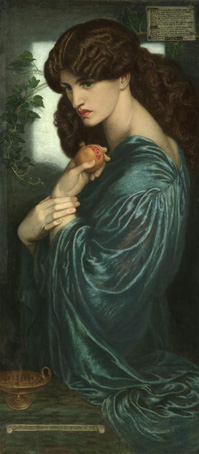
Proserpine
1874 - 125 × 61 cm - Oil on canvas
Tate Gallery, London, United Kingdom >
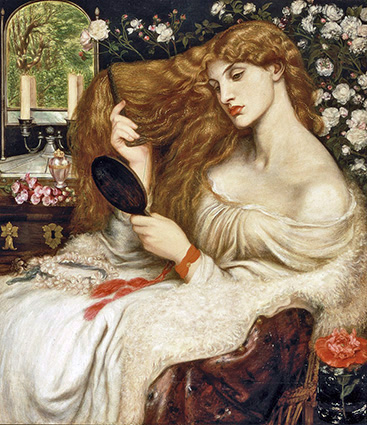
Lady Lilith
1866/68 - 99 x 86 cm - Oil on canvas
Delaware Art Museum, Wilmington, USA >
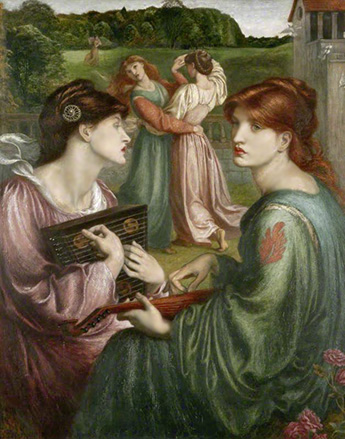
The Bower Meadow
1872 - 117 x 101 cm - Oil on canvas
Manchester Art Gallery, United Kingdom >
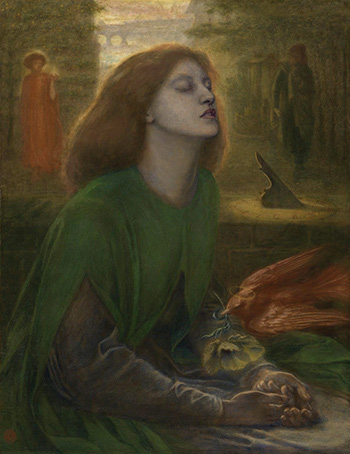
Beata Beatrix
1864/70 - 86 x 66 cm - Oil on canvas
Tate Gallery, London, United Kingdom >
********
Marianne Stokes
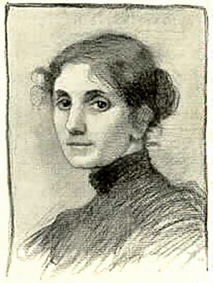
* 19. 1. 1855 in Graz (Marianne Preindlsberger) ; † 13. 8. 1927 in London
Austrian-British painter
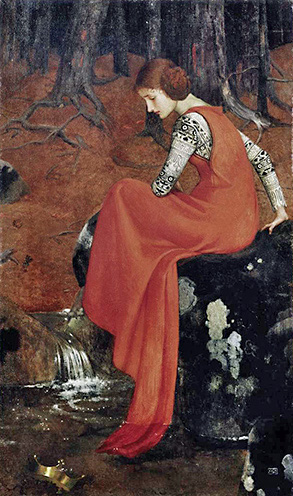
Melisande
ca. 1895 - 87 x 52 cm - Tempera on canvas
Wallraf-Richartz-Museum, Köln, Germany >
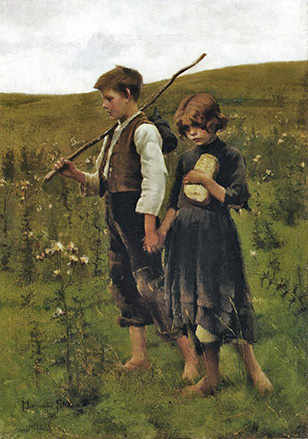
On the Way to the Fields
1883/87 - 55 x 39 cm - Oil on canvas
Privatbesitz
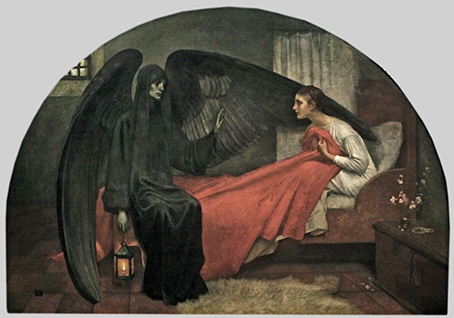
Death and young Woman
1908 - 95 x 135 cm - Oil on canvas
Musée d’Orsay, Paris, France >
******
The Pre-Raphaelites emphasised the art of the late Middle Ages as exemplary and combined it with the demand for the depiction of nature, whereby the latter in turn referred to a confrontation with the young photography.
William Holman Hunt
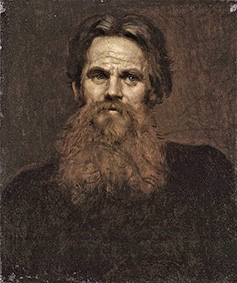
William Holman Hunt, portrayed by William Blake Richmond
* 2. 4. 1827 in London; † 7. 9. 1910 in London
British painter and one of the founders of the Pre-Raphaelite group
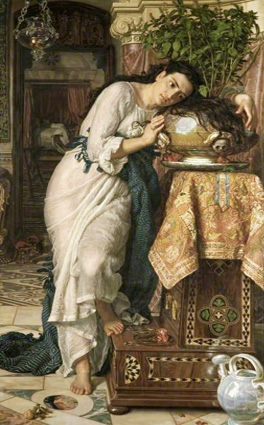
Isabella and the Pot of Basil
1868 - 187 x 116 cm - Oil on canvas
Laing Art Gallery, Newcastle-upon-Tyne, United Kingdom >
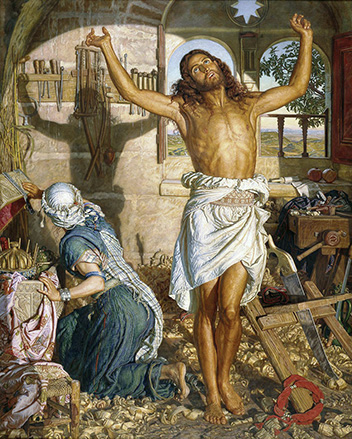
The Shadow of Death
ca. 1870/73 - 214 x 168 cm - Oil on canvas
Manchester Art Gallery, Manchester, United Kingdom >
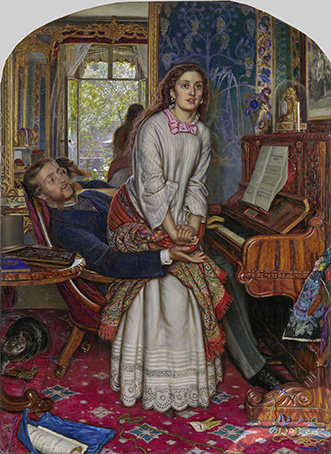
The Awakening Conscience
1853 - 76 x 56 cm - Oil on canvas
Tate Gallery, London, United Kingdom >
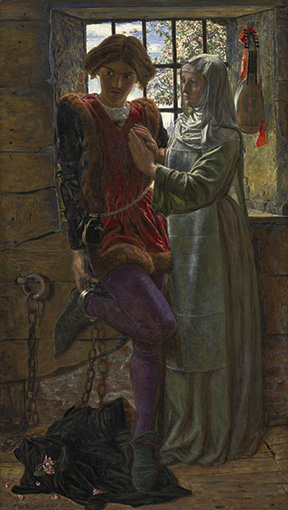
Claudio and Isabella
1850 - 76 x 43 cm - Oil on mahogany wood
Tate Gallery, London, United Kingdom >
******
Walter Crane
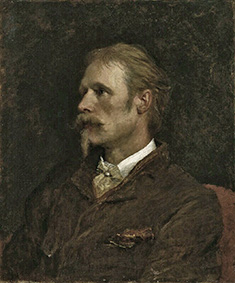
* 15. 8. 1845 in Liverpool; † 14. 3. 1915 in Horsham, West Sussex
English painter and illustrator
One of the leading representatives of the Arts and Crafts Movement, a British movement in art and especially in product design in the mid-19th century until around 1920
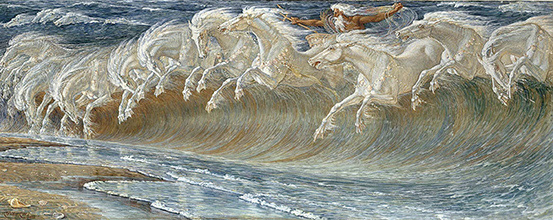
Neptune's Horses
1892 - 34 x 85 cm - Oil on canvas
Neue Pinakothek, München, Germany >
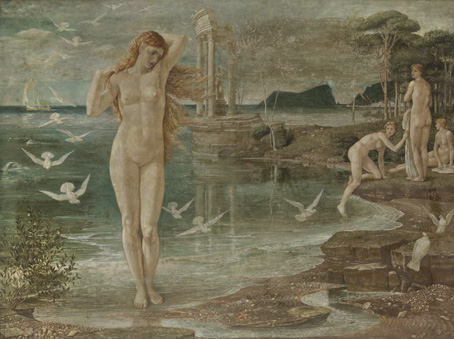
The Renaissance of Venus
1877 - 166 x 214 cm - Tempera on canvas
Tate Gallery, London, United Kingdom >
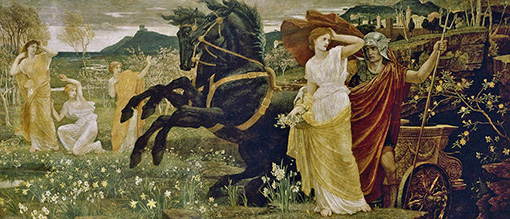
The Fate of Persephone
1877 - 122 x 267 cm - Oil on canvas
Private Property

Illustration for 'The Frog Prince'
1874 - 32 x 36 cm Book
Smithsonian Museum, Washington, USA >
John William Waterhouse
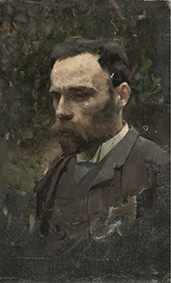
* 6. 4. 1849 in Rom; † 10. 2. 1917 in London
British painter who belongs to both the Academic Realism and Pre-Raphaelite groups.
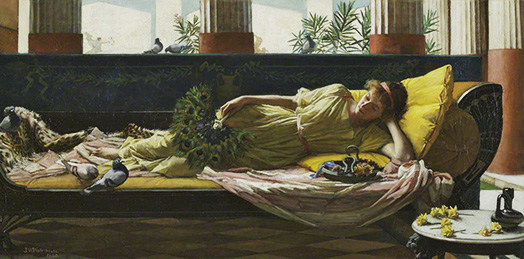
Dolce Far Niente
1880 - 50 x 97 cm - Oil on canvas
Kirkcaldy Museum and Art Gallery, Fife, Scotland >
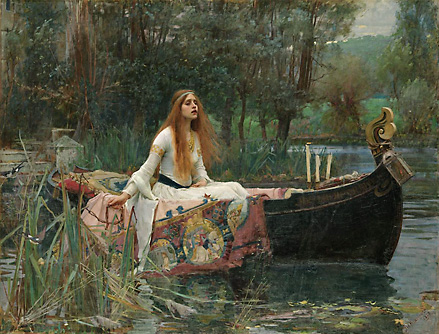
The Lady of Shalott
1888 - 153 x 200 cm - Oil on canvas
Tate Gallery, London, United Kingdom >
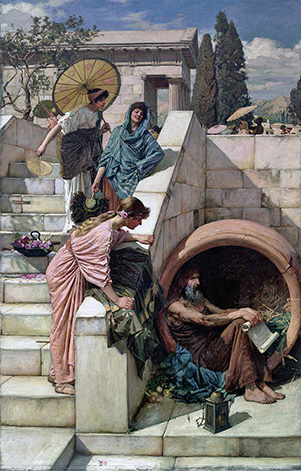
Diogenes
1882 - 208 x 135 cm - Oil on canvas
Art Gallery of New South Wales, Sydney, Australia >
The Pre-Raphaelites emerged from the rejection of Academy painting, as did the Nazarenes. They would later influence Symbolism and Art Nouveau. Theodor Fontane wrote about the Pre-Raphaelites: "Here we have seeds for the future and, after a process of purification, perhaps a new silver eye for art." Here, too, a re-evaluation as an important part of the arts and their effect on other branches of the visual arts can be observed in recent decades.
*****
Evelyn De Morgan
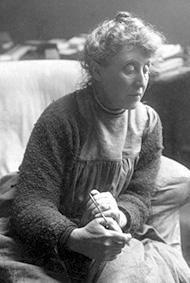
* 30. 8. 1855 in London als Evelyn Pickering; † 2. 5. 1919 in London
An English painter from the Pre-Raphaelite circle.
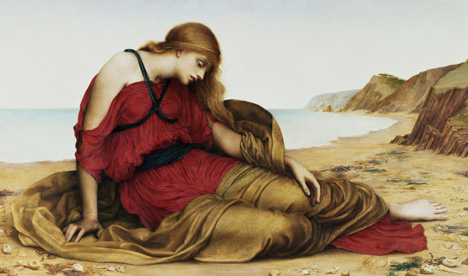
Ariadne in Naxos
1877 - 60 x 101 cm - Oil on canvas
The De Morgan Foundation, Barnsley, England >
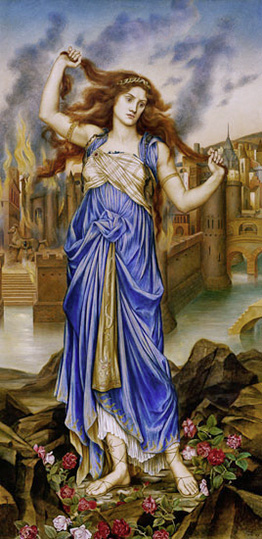
Cassandra
1898 - 98 x 48 cm - Oil on canvas
De Morgan Collection, Barnsley, England >
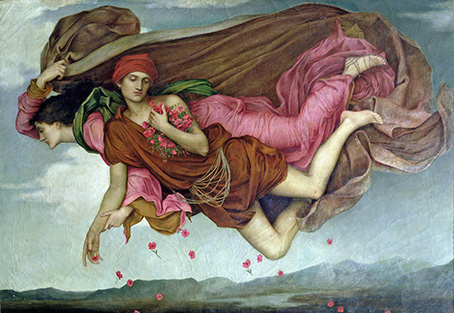
Night and Sleep
1878 - 109 x 158 cm - Oil on canvas
De Morgan Collection, Barnsley, England >
******
Edward Coley Burne-Jones
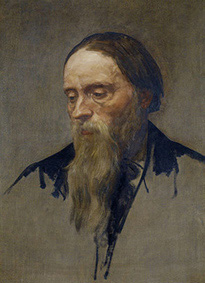
Edward Burne-Jones painted by Alphonse Legros
* 28. 8. 1833 in Birmingham; † 17. 6. 1898 in London
British painter and one of the leading representatives of the Pre-Raphaelites. He worked closely with William Morris in the fields of book decoration, textile design and stained glass.
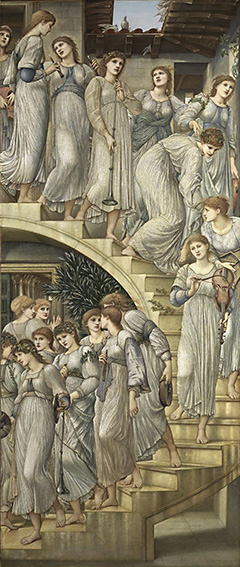
The Golden Stairs
1880 - 269 x 117 cm - Oil on canvas
Tate Gallery, London, United Kingdom >
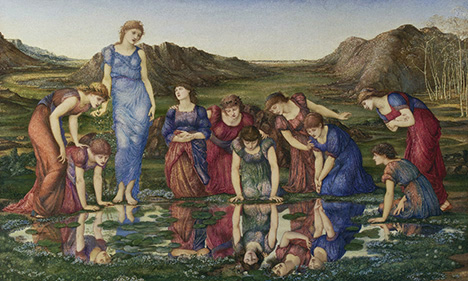
The Mirror of Venus
1877 - 120 x 200 cm - Oil on canvas
Gulbenkian Museum, Lisbon, Portugal >
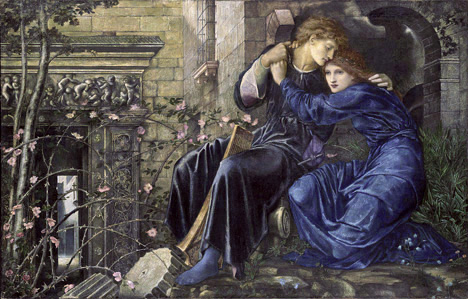
Love among the Ruins
ca. 1873 - 96 x 152 cm - Watercolour and gouache on paper
Private Property
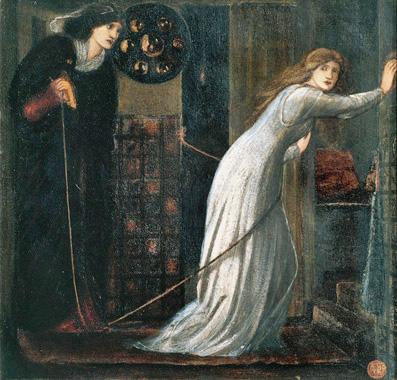
Fair Rosamund and Queen Eleanor
1862 - 26 x 27,3 cm - Ink, watercolour and gouache on paper
Tate Gallery, London, United Kingdom >
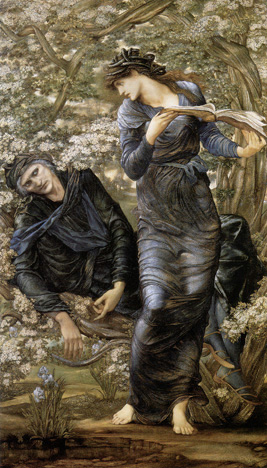
The Beguiling of Merlin
1872/78 - 186 x 111 cm - Oil on canvas
Lady Lever Art Gallery, Liverpool, United Kingdom >
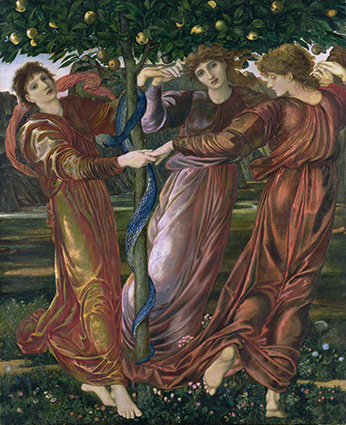
Garden Hesperides
(Maria Zambaco is one of the daughters of Night and Darkness)
ca. 1869/73 - 119 x 98 cm - Tempera, gouache and oil on canvas
Kunsthalle Hamburg, Germany >
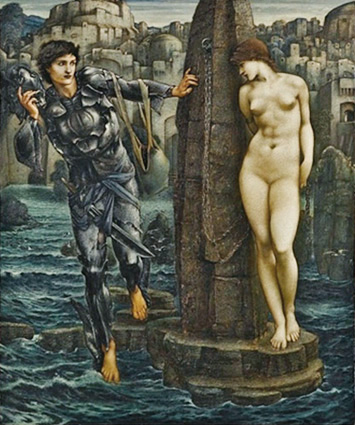
The rock of destiny
1884/88 - 155 x 130 cm - Oil on canvas
Staatsgalerie Stuttgart, Germany >
Ingres / Delacroix |
Gustave Courbet |
|
|---|---|---|
Imprint |